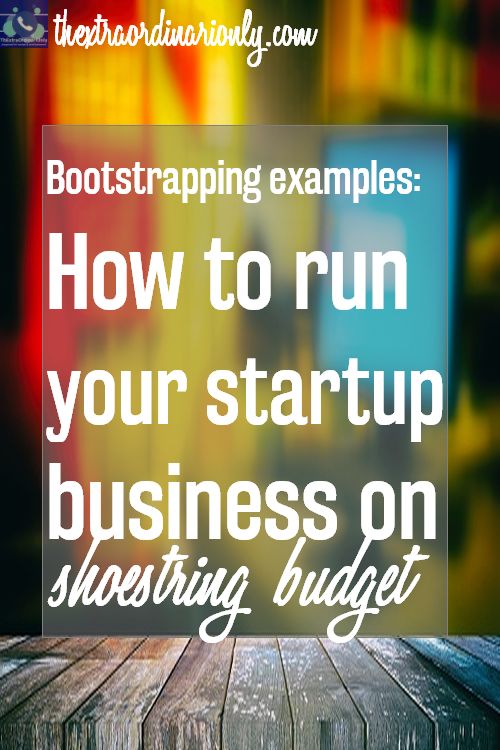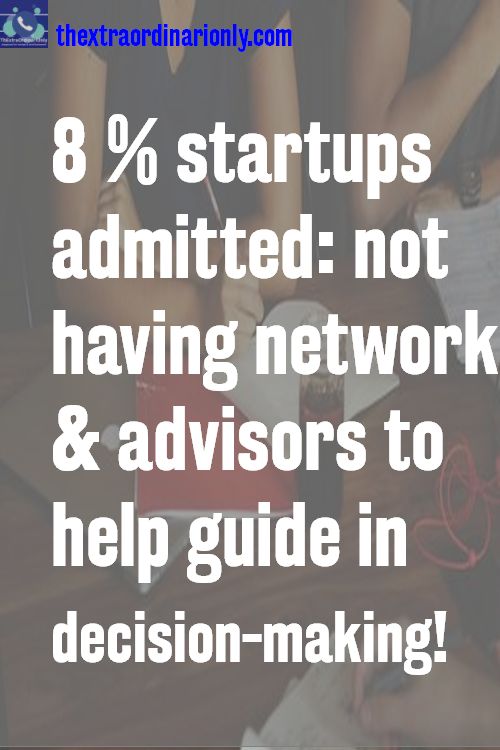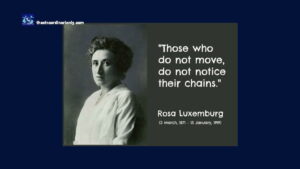Bootstrapping examples: How to run your startup business on a shoestring budget
Bootstrapping can be an exciting way to run your business without having to rely on outside funding, but it isn’t easy. With the influx of technological advancements and the rise of social media, there has been a steady increase in new startups and businesses over the past few years.
There are countless ways that you can lose everything and end up with nothing, but there are also plenty of success stories of people who made it with little capital or none at all. Whether you’re looking to develop your own product or are just looking to open up a brick-and-mortar store, one of the most important things you can do is bootstrap your startup business.
What is bootstrapping?
Bootstrapping is an entrepreneur’s best friend. There are many benefits to bootstrapping your business, and it’s the only way you’ll ever be able to grow as fast as you want to.
But what is bootstrapping in entrepreneurship? It’s simply starting your business with little or no outside funding, which allows you to keep more of the company equity and maintain control of decisions. Plus, it might even help turn your business into a profitable venture.
Bootstrapping is the minimalistic business culture approach to starting a company, which is characterized by extreme sparseness and simplicity. It usually refers to the starting of a self-sustaining process that is supposed to proceed without external input.
Investopedia
Bootstrapping refers to the act of starting up your company without the aid of outside funding from angel investors or venture capitalists. While this might seem like something that could only be done by scrappy startups in garages, there are plenty of established companies out there who bootstrapped themselves into being big players in their respective industries.
Bootstrapping is a term for moving ahead without help. Bootstrapping is based in a 19th century metaphor for an impossible task: “to pull yourself up by your bootstraps.”
John Spacy, Simplicable
Seeding a business is the process of starting up your company by reinvesting profits, financing from friends and family, or other small investments. Entrepreneurs often use this approach because it provides an easy way to get started without going into debt.
How to bootstrap your startup business: 5 tips and tricks

A study by CBI Insights showed 8 percent of startups admitted to not having a network, and not having advisors to help guide them in their decision-making. Whether you are starting your own project from scratch or expanding upon an existing project, understanding these bootstrapping examples and exploits can be beneficial for anyone looking to take their idea forward without a large investment upfront.
“It’s all right to tell a man to lift himself by his own bootstraps, but it is cruel jest to say to a bootless man that he ought to lift himself by his own bootstraps.”
What are some of the most important tips successful startup and small business owners learned while running their businesses and achieving success through bootstrapping tactics rather than taking on debt or outside capital? Great examples of how entrepreneurs used innovative bootstrapping techniques to run successful companies include:
Seth Godin started his company by paying himself $1 per hour, then invested every dollar he made back into the company.
Ryan Carson became the founder and CEO of Treehouse after launching a web design company at 17-years old. To fund Treehouse’s launch, Ryan chose not to spend any money on advertising, instead opting for customer acquisition through word-of-mouth marketing tactics like blogging and social media outreach. These techniques were instrumental in building an audience, leading to profitable growth and making Treehouse one of the best bootstrapping success stories.
Top five sweat equity considerations by other entrepreneurs you can also take before bootstrapping your businesses
Pitching your idea is not always the best way to fund your business. Sweat equity offers an alternative model that emphasizes staying invested in your company while minimizing out of pocket expenses.
- A side project that isn’t taking off as expected: The founder of Reddit, Alexis Ohanian, had to raise $12,000 from family and friends when he was developing the site in 2005.
- An investor who saw potential but wants more equity than you’re willing to give away: If this happens, find another investor who will offer what you need without demanding too much ownership. There’s no shortage of VCs looking for opportunities.
- Strategic partnerships with companies that can provide needed expertise or distribution channels without demanding a share of ownership: Neil Blumenthal (co-founder and co-CEO) and his co-founders of Warby Parker started with $150K seed money that they earned from graduate school and personal savings to finance the company during its first year while they built out a prototype and recruited founding team members. They also raised money from their friends and family early on to help build their eyewear startup. Now they have strategic partnerships with giants like Luxottica Group (OTC:LUX) for distribution and JC Penney (NYSE:JCP) for retail space.
- Investing some money upfront to buy some time so you can continue working on your product: Venture capitalists do this by investing small amounts of seed capital to startups.
- Offering sweat equity instead of cash payments as part-time employees: Skift hired its marketing director based on a revenue share agreement instead of salary plus commission.
There are also other ways to work for equity such as: freelance consulting, pro bono work, unpaid internships, and bartering. As the CEO of Go Overseas noted: Look at it as getting paid back through dividends.
“Sometimes you need a hero; most times you are one.”
5 bootstrapping examples for go-getters
Since bootstrapping is the act of starting and running a business without incurring debt, it is often associated with startups that are in their early stages and don’t have access to funds from outside investors.
If you’re bootstrapping, cashflow is king. If you want to possibly build a product while your revenue is coming from other sources, you have to get those sources stable before you can focus on the product.~ Saapspire
Here are five examples of how successful companies got their start, and how they were able to use a blend of bootstrapping examples to grow with little or no help from outside investors
1) Working with friends
Bootstrapping with friends is the most common way to start a new business.
When you decide to build your startup with friends, it’s important to think through the following: who will take on which tasks? Who’s going to be responsible if something goes wrong? And, what if someone wants out of the project?
It’s also important to make sure that each team member has an equal stake in the company. In many cases, one person may want to work full-time while others want to work part-time or contractually. You need to come up with a plan and share responsibility before things get out of hand.
2) Bootstrapping by working with family
Working with family is one of the best ways to get an idea off the ground and make it work. Whether you’re working with your spouse or taking on a partner, you have someone close who can help ensure that your business stays afloat when things seem tough.
Plus, there’s another bonus: If you’re bootstrapping together with a family member, chances are you’ll be able to do it without spending too much money. With this type of bootstrapping, you won’t need any outside funding to seed your business because it will start out small and still be under your control.
Pilot programs also work well for bootstrapped businesses because they give you a chance to test out how something works before moving onto anything bigger. The key is to always focus on what will bring in more revenue rather than investing in expenses like office space.
3) Being creative as a bootstrapping example
Creativity and resourcefulness are skills you can use to bootstrap your startup business.
For example, if you need a new logo design but don’t have the funds, visit a free stock photo website and find an appropriate photo for your brand and use that as your logo. Also, if you need someone to work on a special project but don’t have the budget for it, offer to pay them in equity or a future stake in the company. You’ll be able to compensate the person by giving them a percentage of your company’s profit when it’s worth more than what they put in.
These two creative strategies will not only allow you to start your own company, but also keep costs down so you’re not losing money from day one.

“Bootstrapping is a way to do something about the problems you have without letting someone else give you permission to do them..”
4) Working with connectors
How important is it to work with connectors to make connections and build relationships before launching a new business?
One company who has used this strategy is Buffer. They use a ‘list-building’ technique to gain as many connections as possible and turn those connections into customers.
One of the most well-known bootstrapping examples is the story of how Google was born. The founders made the decision to move back in with their parents so they could save money and not have any distractions that would get in the way of building a successful product.
Another successful bootstrapped startup from recent years is Airbnb. It began as an idea but became more than just an idea when one of the founders decided to rent out his couch on Airbnb for some extra cash during grad school.
The renters offered to pay him in advance and he accepted. Over time, he realized there was potential to do more than just rent out couches on Airbnb. With his cofounder, he set up Airbnb as a service where people could connect through the internet and find places to stay anywhere in the world – whether that be renting a room or renting an entire home.
As the service grew, it expanded to include things like professional photography services, travel insurance, and customer support to help ensure its users had everything they needed for their trip. Airbnb started as a very lean operation with little funding behind it. But through hard work and dedication, they managed to overcome all odds against them (despite being rejected by both Y Combinator and Techstars) and found success through bootstrapping.
5) Partners

Working with partners is a great example of bootstrapping. Many people have a hard time believing in themselves, so it can be very beneficial to work with other people who are equally as passionate about your business idea.
When you know that someone has your back, it will help you take more risks and move forward in the process. Additionally, working with partners on projects not only provides you with additional assistance; it also opens up opportunities to collaborate on ideas that would not exist without collaboration. The result is two (or more) heads thinking together which can lead to an unlimited number of creative possibilities.
6) Being cheap as possible
As a founder, you never pay retail price for anything and take advantage of any free service or resource you can find. You also sell your goods and services at a discount in order to make more profit per sale.
One example of Being as Cheap as Possible would be an entrepreneur who buys materials from wholesale sources in order to cut costs. Another example would be a business woman who buys cheap ingredients for making homemade products such as soap or lotion which can then be sold at higher prices than what was originally paid for the product.
None of us got where we are solely by pulling ourselves up by our bootstraps. We got here because somebody – a parent, a teacher, an Ivy League crony or a few nuns – bent down and helped us pick up our boots.
7) Subsidy finance
A subsidy finance is a great way to use your startup funds in the best way possible. It is also an excellent way to keep your cash flow positive and avoid spending too much of it at once. Take advantage of any government cash payments that may help offset your costs.
There are many tax deductions out there that can save you thousands annually. For example, Section 179 tax deductions allow companies to deduct up to $500,000 worth of purchases. And one important tax deduction that all startups should take advantage of is the research and development tax credit which allows them up to 50% off their qualified research expenses (up to $250K). Another strategy for saving money is federal contracts which usually come with pretty good pricing thanks to volume discounts.
Do you have one large purchase that needs to happen, such as purchasing raw materials, but you don’t want to spend all of your available capital on that purchase just yet? In this case, you can buy some or all of what you need with cash and then borrow the rest with a line of credit or small business loan. The only caveat is that any money borrowed must go towards building equity in your company; do not borrow money that will just be used for salaries or other operating expenses!
The key thing to remember when using the subsidy finance approach is that borrowing should never negatively impact your profit margin by more than 15%. If you are using a business loan, there’s no reason why you should pay more than 4% interest because this means there’s something else going on within your company.
8) Cash from sales
For example, the founders of Buffer created their MVP, got feedback from potential users, and then built the company’s product. Other bootstrap examples include the founders of Dribbble and Typekit who used some capital from friends and family to start their businesses but then relied on customer revenue to grow.
Is this how Facebook started?
Why are Tesla Motors, Mattel Inc., Bonobos Inc., and Facebook feted the best boost strapping examples?
It is common to use startup bootstrapping examples and strategies when you want to pilot work from idea with minimal risk before more formal funding sources are found.
This method was used by Mark Zuckerberg when he started Facebook in 2004. He took $1,000 that his father had given him as a graduation present and invested it in Facebook. He then spent the next few months developing his website while simultaneously using his knowledge as an undergraduate computer science student at Harvard to learn what worked on existing social networks like Friendster and MySpace.
Mark eventually dropped out of college to focus on Facebook full-time. The strategy paid off, since he created one of the most successful websites in history and now has a net worth over $34 billion dollars according to Forbes Magazine.
“Having the least usually forces us to make the most of what we have.”
11 successful entrepreneurs who used bootstrapping to launch their businesses
Do you agree that bootstrapping is an alternative way to fund your startup. It’s not as easy as it sounds though, because you have to have some money saved up before you can start on this route. It’s also more risky because if the business fails, all the money will be lost. How do you secure financial success in the long-run starting with little or no capital at all?
Startups that have successfully bootstrapped themselves include Groupon (which began with a $10,000 investment), Google (started in 1996 with $100,000 from co-founder Sergey Brin’s graduate school stipend), Hotmail (started in 1996 as Jack Smith’s Outlook software) and Apple Computer Inc. which famously released its first personal computers after only a year of research and development under Steve Jobs’ direction (it grew to be valued at over $1 trillion).
Only 2% of VC funding goes to female founders, with only 0.2% going to companies led by Black women
Eleven examples of entrepreneurs who successfully bootstrapped their business include:
I. Graham Hawkes
Graham Hawkes started his first company from the ground up, and found success by leveraging the experience of all three. With a little resourcefulness, Graham was able to bootstrap all of his companies and work with government cash payments and tax deductions to cover any shortfalls as needed.
“Science makes people reach selflessly for truth and objectivity; it teaches people to accept reality, with wonder and admiration, not to mention the deep awe and joy that the natural order of things brings to the true scientist.”
II. Linda Babcock
The Founder of Careers Done Write, is one of the best bootstrapping examples. She started her business by leveraging skills she already had: writing and editing abilities.
III. Chris Brogan
Chris Brogan launched four new businesses in one year without any funding and achieved great success with piloting each startup business idea.
IV. Lauren Viera
Lauren Viera, founder of the company One Bag At A Time, was determined to start her own business but didn’t want to take on debt or rely on credit cards so she decided to bootstrap it instead.
V. Alan McBride
Alan McBride created an international powerhouse business by seeding it with social media expertise, personal charm and a talent for persuasion.
VI. Abadesi Osunsade
Abadesi Osunsade, the Founder & CEO of Hustle Crew launched Hustle Crew as a community for the underrepresented in tech to effectively network for each other. Most recently, Hustle pivoted to address structural oppression, bias, and privilege within workforces.
VII. David Braben
David Braben used bootstrapping to launch Frontier Developments: one of the world’s most successful game developers.
VIII. Mahisha Dellinger
Mahisa Dellinger took a risk and used her personal savings of $30,000 to focus 100% on developing the now multi-million dollar natural hair care brand, Curls in 2002, after struggling to find black hair care options for naturals on store shelves.
IX. John Mackey
John Mackey, co-founder and CEO of Whole Foods Market, grew the grocery store chain into a $10 billion dollar enterprise by using frugal innovation (small changes in operations) which he referred to as bootstrapping.
X. Crystal Etienne
Crystal, the developer of Ruby Love’s revolutionary technology bootstrapped her company to $10M in sales, closing a funding deal of $15M from The Craftory in 2019, with an initial Series A funding of $8M—the fourth largest round ever for a company founded by a Black woman.
XI. Jeff Bezos
Jeff Bezos is another example of someone who has bootstrapped their way to success with Amazon.
What other successfully bootstrapped startup companies do you want to share with us that are bootstrapped?

How do you apply the bootstrapping examples to your own business idea?
Let’s say your startup idea is to start an online business that sells cold pressed virgin coconut oil. It’s hard enough to get the idea off the ground without worrying about what to do with all of the money that’s coming in. If you don’t have any money saved up or access to credit cards, you now know where to get cash–government cash payments! The government provides financial assistance in various forms, like grants and loans.
Do you know of the plenty programs available to entrepreneurs on a budget who want to make their business idea a reality? Ask around at your local bank or chamber of commerce. They’ll be able to point you in the right direction. ‘
Are you just starting out? Microloans which are typically between $500 and $5000 dollars could be your answer to best bootstrapping examples. In fact, many startups use this strategy because it takes less capital than traditional funding methods while allowing them enough capital to cover expenses until they become profitable.
Which bootstrapping example have we left out?
Startups usually have to bootstrap, meaning they do not take outside investments. Instead, they rely on seeding a business and piloting a startup with their own funds and earnings.
This may seem risky but its a huge advantage because it reduces the need for approval from outside investors who may disagree with the direction of the company. Entrepreneurs often see this as an opportunity to pursue their vision without outside pressures which is why this strategy has proven to work so well.
Recap on bootstrapping examples in business
In this blog post we’ve gone over the best examples of how successful business-minded individuals were able to make a business work using minimal resources. Whether you are trying to bootstrap your way into entrepreneurship or find yourself in a tight spot where you need to use less cash, these tips will help you get up and running!
These are the 5 inspiring bootstrapping examples to help start your business.
1) Working with friends
2) Bootstrapping by working with family
3) Being creative as a bootstrapping example
4) Working with connectors
5) Partners
6) Being cheap as possible
7) Subsidy finance
8) Cash from sales
Now help an entrepreneur out by sharing this post.
Sources
- Female Founders Got 2% of Venture Capital Dollars in 2017 – Fortune Magazine
- Use These 5 Financing Options for Your Bootstrapping Startup – Small Business Trends
- 422 startup failure post-mortems – CBInsights
Motivating bootstrapping examples by successful entrepreneurs
- Creating a Startup Without any Outside Investment. andcards: an Application That Automates the Management of Coworking Spaces –Ukrainian Cluster
- Bootstrapped dating site PlentyOfFish has fewer than 100 employees and Match just bought it for $575 million in cash. – Business Insider
- Here’s How I Launched My Startup Without Investors – Yahoo!
- A New Study Reveals the 20 Factors That Predict Startup … – Entrepreneur
Related valuable information to research
- Vision Statement to Make Your Dream a Reality: Doggedly Developing and Tinkering Vision Statements to Adapt Lest You Are Left Behind (Part 6)
- Meaningful ways to welcome new clients – How to show excitement and eagerness [3 benefits of hearty handwritten cards]
Are there bootstrapping examples you need help with?
Ask for help.
Do you know a startup founder or small business creator struggling to scale their business more quickly? Help us share these bootstrapping examples to reach them today.





